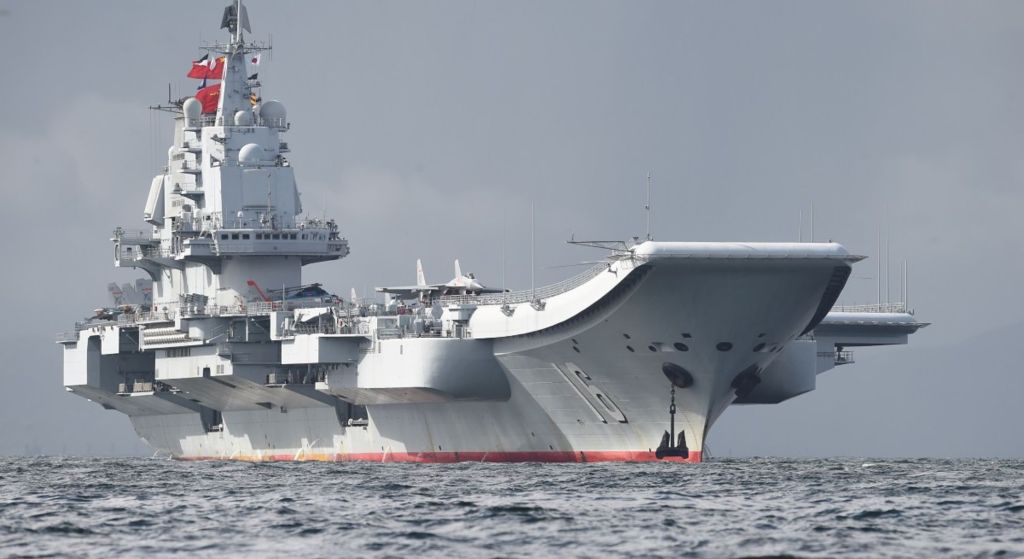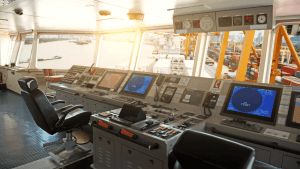Aircraft carriers hold immense significance in showcasing a country’s military prowess. Among the few countries with multiple aircraft carriers, China has recently launched its third carrier, the Fujian. This article will delve into the advancements, features, and deployments of Chinese aircraft carriers, focusing on the Fujian, Shandong, and Liaoning carriers. Through a comprehensive analysis, we will examine their capabilities, technological advancements, and the implications for regional security.
The Fujian: A Leap in Advancement
China’s third aircraft carrier, the Fujian, is expected to surpass its predecessors in advanced technology and capabilities. To facilitate the launch of heavier and larger fixed-wing aircraft, the Fujian will feature a “catapult-assisted take-off but arrested recovery” (CATOBAR) system. This system, powered by an electromagnetic mechanism similar to the U.S. Navy’s Gerald R. Ford-class carriers, represents a significant leapfrogging beyond conventional steam-powered catapults. The CATOBAR system will enable Fujian to operate a more robust airwing, expanding its operational capabilities.
In addition to its advanced launch system, the Fujian boasts a more significant size than the Liaoning and Shandong carriers. With a displacement of approximately 80,000 tonnes, the Fujian provides enhanced capacity for various operations. While smaller than the U.S. Navy’s Ford-class carrier, it surpasses pages such as France’s Charles de Gaulle and the United Kingdom’s HMS Queen Elizabeth. However, it is essential to note that the Fujian remains conventionally powered, unlike the nuclear-powered carriers of the United States and France.

The Future of Chinese Aircraft Carriers
- Further Technological Advancements: CChina is projected to invest in R&D to improve and introduce new technology. This could include advancements in electromagnetic launch systems, carrier automation, and aircraft carrier-based weaponry.
- Expansion of the Carrier Fleet: China’s plans indicate an ambition to build more aircraft carriers in the coming years. This would significantly enhance China’s naval projection capabilities and solidify its position as a significant maritime power.
Development of Carrier-Based Aircraft: In addition to carrier technology, China is actively developing new carrier-based aircraft, including fighter jets, early warning aircraft, and electronic warfare platforms.
The Shandong: China’s Second Carrier
China’s second aircraft carrier, the Shandong, was a significant milestone in the country’s naval development. While less advanced than the Fujian, the Shandong is crucial in expanding China’s maritime capabilities. Equipped with a ski jump-style “short take-off, barrier-arrested recovery” (STOBAR) launch system, the Shandong relies on a different technology from the CATOBAR system of the Fujian. The STOBAR system allows the carrier to launch fixed-wing aircraft using a ramp-like structure, which provides the necessary lift for take-off.
With a displacement of approximately 66,000 tonnes, the Shandong is more significant than its predecessor, the Liaoning. This increased size enables the carrier to accommodate a more substantial airwing and support a broader range of operations. As China continues improving its carrier capabilities, the Shandong is a stepping stone towards more advanced carriers like the Fujian.
The Liaoning: China’s First Aircraft Carrier
China’s first aircraft carrier, the Liaoning, holds historical significance as the catalyst for China’s aircraft carrier program. Initially an ex-Soviet vessel purchased from Ukraine in 1998, the Liaoning underwent extensive refurbishment and modernization to become operational. While it may not match the Shandong and Fujian technological advancements, the Liaoning remains a crucial asset for China’s naval fleet.
The Liaoning features a ski jump-style launch system similar to the Shandong, allowing short take-offs and barrier-arrested recoveries. A displacement of approximately 60,000 tonnes provides a solid foundation for China’s carrier capabilities. The Liaoning has been involved in air defense and anti-submarine training in the western Pacific Ocean, showcasing China’s determination to enhance its maritime presence.

Deployments and Regional Implications
China’s aircraft carriers have become critical players in the geopolitical landscape, drawing attention from neighboring countries and beyond. The deployments of these carriers have raised concerns and prompted responses from regional powers.
These carriers symbolize China’s growing maritime capabilities and ambitions, challenging established naval powers in the Asia-Pacific region. Their presence underscores China’s assertiveness in territorial disputes, particularly in the South China Sea, leading to heightened tensions with neighboring nations and drawing scrutiny from global stakeholders. As China continues to expand its naval presence and refine its carrier operations, the strategic implications for regional stability and international security remain a focal point of concern for policymakers worldwide.
Taiwan and Japan’s Monitoring
The presence of Chinese aircraft carriers has particularly captured the attention of Taiwan and Japan. Taiwan’s Ministry of National Defense reported the detection of 35 People’s Liberation Army (PLA) aircraft, with 28 crossing the median line between China and Taiwan. They also noted the entry of the PLAN aircraft carrier Shandong into the western Pacific. In response, Taiwan deployed combat air patrol aircraft, navy vessels, and land-based missile systems to monitor the situation.
Japan’s Joint Staff Office of the Ministry of Defense confirmed the presence of the Shandong Carrier Strike Group (CSG) in the Philippine Sea, with the destroyer JS Ariake shadowing the group. The CSG consisted of six ships, including the carrier CNS Shandong and various accompanying vessels. Japan also expressed concern over North Korea’s ballistic missile launches, which occurred during the same period.
North Korea’s Missile Activity
North Korea’s ballistic missile launches have added another layer of complexity to the regional security landscape. The launches took place while North Korean leader Kim Jong Un was visiting Russia, a move that attracted attention and speculation regarding the motivations behind the launches. Japan promptly lodged a formal protest against the launches, emphasizing the region’s need for stability and peace.
The timing of the missile launches during Kim Jong Un’s visit to Russia suggests a calculated message to both regional and global powers. This manoeuvre underscores North Korea’s persistence in maintaining its strategic autonomy and leveraging external relationships for its geopolitical objectives. As tensions escalate, diplomatic efforts to address North Korea’s provocations become increasingly urgent to prevent further destabilization in the region.

FAQ’s
What is the Chinese aircraft carrier?
An aircraft carrier is a type of warship with a flight deck and facilities for loading, unloading, launching, and retrieving planes.
How many aircraft carriers does China have?
Currently, China has two operational aircraft carriers, the Liaoning and the Shandong, with a third carrier under construction.
What is the significance of Chinese aircraft carriers?
Chinese aircraft carriers symbolize the country’s growing military capabilities and ambition to project power beyond its shores.
How does the Chinese aircraft carrier compare to those of other countries?
While China’s aircraft carriers are not as advanced as the United States, they still represent a significant leap in China’s naval capabilities.
What are the plans for Chinese aircraft carriers?
China is expected to continue expanding its carrier fleet and developing more advanced carrier-based aircraft and technologies.

China’s aircraft carriers, including the Fujian, Shandong, and Liaoning, represent significant advancements in the country’s naval capabilities. Each carrier possesses unique features and technologies, contributing to China’s growing presence in the maritime domain. The deployments of these carriers have garnered attention from neighboring countries, highlighting the complex geopolitical dynamics in the region. As China continues to develop its naval power, the strategic implications of its aircraft carriers will continue to shape the regional security landscape.
The advancements in China’s aircraft carriers underscore the country’s commitment to expanding its military capabilities and asserting its influence on the global stage. With the Fujian on the horizon, China’s naval power is set to reach new heights, presenting challenges and opportunities for regional players. As the international community closely monitors these developments, the future of Chinese aircraft carriers remains critical to global security.





